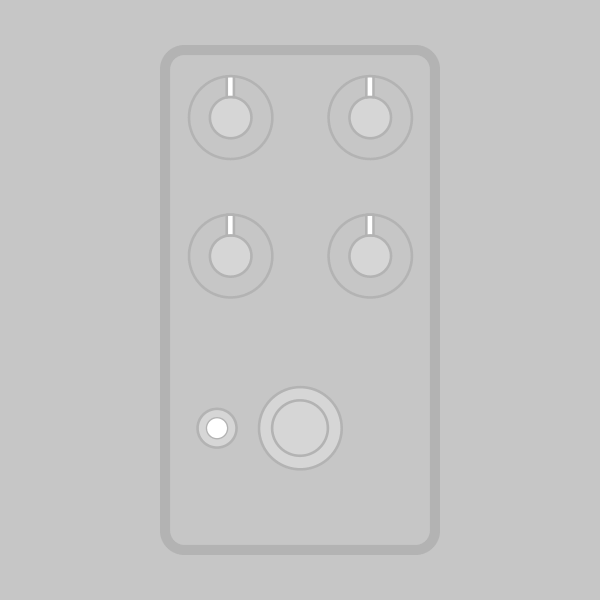
The Plasma Vintage Drive is a clone of the Colorsound Overdriver, a transistor-based boost/drive pedal with 2-band tonestack that was first sold in 1972.
The Overdriver was an updated version of the Power Booster from 1970. The Power Booster ran at 18V using two batteries in series. The Overdriver dropped the requirement of the second battery and ran on a normal 9V supply. There were a few other very minor tweaks to component values, but it’s the same basic circuit.
The Plasma project is a direct clone of the Overdriver, but with one modification: it adds an output volume control. This way you can set the gain according to the tone you want without being tied to the volume that is produced along with it.
Note that the Overdriver is sometimes described as “splatty” at medium gain levels as the notes decay. It works best at low gain as a clean boost with tone-shaping capabilities, or at high gain where it’s not unlike a Big Muff. If you hear this splattiness, know that it’s a byproduct of transistor-based distortion and it’s working correctly!
The 125B version of the Plasma is different from the first version in that it drops the Power Booster compatibility. The Power Booster is instead available as another circuit, the Nucleus, which has an on-board charge pump for 18V operation. In addition, in this revised version, the transistor bias trimmers have been removed. It’s not necessary to bias the transistors in the Overdriver circuit for correct operation.
The Power Boost was first released in 1970[1] by Sola Sound / Colorsound, the house brand of the Macari’s music store on Charing Cross Road in London, who also created and marketed the Tone Bender variants (see our Deimos and Phobos projects). It wasn’t long before it found its way into the rigs of such legends as David Gilmour and Jeff Beck.
In 1971 the Power Boost was revised slightly, changing a few values and dropping the battery requirements down to a single 9v, and released as the Colorsound Overdriver. According to Macari’s[2], this was done after taking the Power Boost to a trade show in the United States and getting a great deal of interest. They say that the Power Boost was just renamed and that it’s otherwise the same circuit but for the power supply.
Since the schematics we have are obviously different, given this information from Macari’s we might be tempted to conclude that the differences between the versions were just routine tweaks to what was basically the same circuit—in other words, the Overdriver is just the new name given to the final version of the Power Boost, and they did not see it as a new pedal with distinct schematics. This is supported by the fact that the Power Boost has at least two known variants, an early one and a later one, with a few different parts between them. Whatever the case, we’ve released the Power Boost as a separate circuit called the Nucleus.
Back to the history: the one thing that was sorely lacking in all of the original Power Boosts and the Overdriver was a true volume control. People would use the gain knob to create the one they were looking for (the amount of grit) but usually the output volume would be enormous by that point. It took more than twenty years, but in 1996 a reissue Overdriver was created that incorporated a volume pot on the output.[3] The trick with this one, though, is that for some unknown reason they incorporated a ‘minimum volume’ resistor which prevented it from going to zero. (We’ve only ever seen this on one other pedal, the Ibanez SD-9 Sonic Distortion.) Because of this, at higher gain levels the circuit can’t actually even get down to unity gain. As far as we know, this minimum volume resistor is still in current reissues, but it’s common to jumper this resistor so the volume can turn all the way down like a normal pedal. (Our projects don’t even have a space for this resistor because it serves absolutely no purpose.)